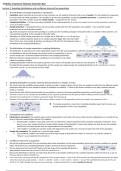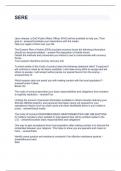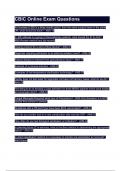Summary
Summary Statistics for Business and Economics- BA2, Business Economics
- Course
- Institution
- Book
This is a summary for the course Statistics for Business and Economics that is given in the second semester of the second semester. This summary is based on the lectures, notes and the book "Business Statistics"
[Show more]






